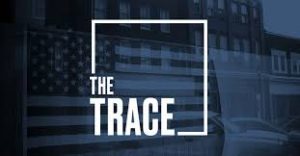The State Department export process allows far too many guns to be sold into areas where they might be used to harm civilians or supply criminals.
By Alex Yablon
The Trace (3/8/19)
When Honduran President Juan Orlando Hernández was re-elected in November 2017, in a vote that outside monitors described as tainted by fraud, protesters around the country took to the streets. Hernández’s first term had been marked by violent crime and corruption; many voters wanted change.
In the ensuing days, military police opened fire on the demonstrators, killing more than 30 people and wounding hundreds. Photos published in the Miami Herald showed officers shooting some protesters in the back. They also revealed something else: The troops were using U.S.-made M4 rifles, the military version of the AR-15.
The United States provides more small arms and ammunition to Central America than any other country does. The market there steadily expanded during Barack Obama’s time in office and appears set to increase under President Donald Trump as well, according to customs data collected by the United Nations Comtrade program. Though the transactions look small compared to the multibillion-dollar arms deals the United States conducts with, say, Saudi Arabia — the United States approved $2 million to $4 million in gun sales per year to Honduras between 2015 and 2017 — the impact of such sales can be substantial in a poor country with a small population and a weak or corrupt government.
Presidents of both parties have armed anti-democratic and corrupt regimes: The Obama administration approved increasing gun sales to Honduras after a 2009 coup, and the Trump administration publicly embraced the president of Guatemala and sold him weapons despite his open opposition to United Nations anti-corruption efforts.
Some of those guns went to authorities who turned them on innocent civilians, as the 2017 protests show. The guns seen in the photos seem to have been exported by Colt’s Manufacturing, a Connecticut-based gun-maker. The company did not return phone calls seeking comment. Other weapons ended up in the hands of criminals, through illicit deals involving corrupt army officers, according to a 2017 report by two nongovernmental groups that investigate law enforcement and corruption in Latin America.
State and organized crime
“There’s nobody down there we could really trust not to sell them on the black market,” said Mark Ungar, a political scientist at Brooklyn College who studies arms trafficking, gangs, and corruption in Central America. “There’s no illusion of a difference between the state and organized crime” in the region.
The violence, corruption, and abuse in Central American countries tend to be the biggest factors driving migration to the United States — a phenomenon the Trump administration has dedicated itself to curbing. Since the gun sales fuel the violence and corruption, the United States has effectively undermined its own objectives by allowing the weapons deals, according to experts.
In early February, the Trump administration finalized a rule change that will make the deals even easier — ending congressional oversight of many overseas gun sales. The president is set to move the export control process from the State Department to the Commerce Department, which is charged first and foremost with increasing sales for American companies. As a result, bureaucrats will no longer have to notify Congress of many gun sales worth $1 million or more. The only thing keeping the change from coming into force is a hold placed by Democratic Senator Robert Menendez of New Jersey, and experts are not sure how long he can keep the rule from taking effect.
Fueling the murder rate
“The fact that the murder rate has gone up so much over the last several years should be an indicator that this is not the time to focus on the profits for gun companies, rather than the safety of the citizens of these countries,” said Representative Norma Torres of California, a native of Guatemala and the founder of the House Central America Caucus.
“Traveling to Mexico and the Northern Triangle and talking to politicians there, this is the No. 1 topic they bring to our attention,” she said, referring to Northern Triangle countries of Guatemala, Honduras, and El Salvador.
The United States is the largest supplier of guns globally, so it makes sense that it would dominate the market in its own backyard, according to the analyst Nicholas Marsh, who tracked the U.N. data for the Norwegian Initiative on Small Arms Transfers, a nongovernmental organization. Geographical proximity reduces shipping costs, making exports to neighboring countries more profitable.
But the U.S. gun export business is also deeply tied to the country’s role in regional politics. During the Cold War, the United States supplied anti-communist insurgents, governments, and their associated paramilitaries with guns, which they used to commit human rights abuses and occasionally massacres. In the service of the ongoing war on drugs, the United States has armed increasingly militarized police forces across the hemisphere. …


